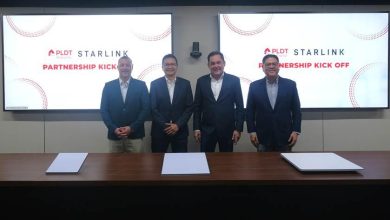Evolving Data Management From Traditional to Next Generation

Data is moving the world of business forward.
But databases aren’t quite keeping up—until now.
For the longest time, organisations have been using relational databases, like MySQL and PostgreSQL, as the backbone of their data management, storing data in tables subdivided into rows and columns and relying on SQL (Structured Query Language) to “interact” with this data. Think of it as the digital equivalent of a highly organised filing cabinet filled with folders and pieces of paper. It is simplistic in this sense, but relational databases got the job done for the most part, helping businesses stay organised and enabling them to track sales, inventories, employee records, and more.
Next-Generation Databases: Out with the Old, In with the New
These traditional databases worked just fine for decades. However, with the unprecedented growth of data intersecting with the diverse needs of modern apps and the increasing demands of the modern-day consumer, relational databases began facing significant challenges in scalability, flexibility, and performance. These challenges underscored a pressing need for a more modern, more adaptable way to manage their data.
Next-generation databases are filling that need.
A next-generation database is a modern type of database management system that upgrades the traditional database so it can better handle larger datasets and more diverse data types with higher velocity—otherwise known as the three Vs of Big Data: Volume, Variety, Velocity—and enhanced performance. It is specifically designed with modern architecture and data models to overcome the limitations of traditional relational databases and provide enhanced scalability, flexibility, and performance.
These new databases, unlike traditional ones, no longer use tables, fields, and rows. Neither do they need a “schema”—a highly-ordered database plan—to get them up and running. Fittingly termed “NoSQL” (short for “not-only SQL”), these modern systems enable rapid data access for real-time apps, utilise a greater variety of data formats, and handle more queries in less time. Just as important, turnaround time is shortened and setup costs are minimised since there is no more need to develop a conventional database schema.

There are so far five major classes of NoSQL:
- Column Families. Closely resembling relational databases, column families store structured data in individual columns that turn into groups the more data is added. Ideal for machine-generated data, column families work best for fast data queries and precision analytics on machine-generated data.
Best Used for: Large-scale, distributed data storage.
Notables Names: Apache Cassandra, Apache HBase
- Document. This NoSQL database stores actual documents—letters, emails, journal entries, or academic papers. This ability to store documents makes this type perfect for unstructured data.
Best Used for: Apps requiring flexible schemas and quick iteration.
Notable Names: MongoDB, Apache CouchDB
- Graph. This type uses graphs to diagram relationships within and among data, making it ideal for apps that need to provide information immediately—much like a powerful search engine would.
Best Used for: Social networks, fraud detection, and recommendation systems.
Notable Names: Neo4j, Microsoft’s Horton
- Key-Value. This type is primarily designed for developing apps quickly and seamlessly—especially if everything else is peripheral.
Best Used for: Caching and real-time analytics.
Notable Names: Riak by Basho Technologies, Redis
- XML. As the name suggests, this type uses XML in defining data structure, making it the preferred database to store and manage nontraditional formats such as video and audio.
Best Used for: IoT applications, monitoring, and analytics.
Notables Names: MarkLogic, Sedna, InfluxDB
From Next Gen to New Gen: Bridging the Old with the New
 Innovation is the name of the game when it comes to tech, and the transition from next-generation databases to new-generation databases is an example. New-generation databases, or NewSQL, are like souped-up versions of NoSQL—compatible with SQL and compliant with ACID (Atomicity, Consistency, Isolation, Durability) properties to ensure reliable transactions and data integrity.
Innovation is the name of the game when it comes to tech, and the transition from next-generation databases to new-generation databases is an example. New-generation databases, or NewSQL, are like souped-up versions of NoSQL—compatible with SQL and compliant with ACID (Atomicity, Consistency, Isolation, Durability) properties to ensure reliable transactions and data integrity.
A noticeable drawback with most next-generation databases is they trade off some ACID properties, particularly strong consistency, in favour of availability and partition tolerance (or a system’s ability to continue functioning despite network partitions that may interrupt communications between and among nodes in a distributed system). In contrast, NewSQL is specifically engineered for ACID compliance, leveraging advanced technologies, such as two-phase commit (2PC) and consensus algorithms, to enable scalability and ensure data integrity.
Being SQL-compatible, NewSQL uses SQL as the query language, meaning developers with experience using traditional relational databases won’t have many problems transitioning to new-generation databases. This sense of familiarity ensures continuity and reduces the learning curve it would usually take to utilise NewSQL correctly.
New-generation databases also represent a happy middle ground between traditional relational databases and NoSQL—blending seamlessly the “ACIDity” of the former and the scalability of the latter. Between today’s unprecedented data boom and the growing criticality of data to business success, organisations are now looking to obtain high-quality data integrity with Big Data volume.
To achieve both, companies would have to either improve their hardware or customise their software for a distributed database. Both are expensive, making NewSQL a logical alternative because it creates a consistent and scalable database. It is particularly well-suited for financial institutions and e-commerce platforms as these require high transactional throughput and exacting consistency—facets that NewSQL excels at with little trouble.
NewSQL Use Cases and Practical Applications
While NewSQL works well with any company at any vertical, the following use cases and practical applications are particularly suited for this type of database:
| Financial Services
High-frequency trading, fraud detection.
These use cases require high transactional throughput, low latency, and strict data consistency for the accurate and timely processing of financial transactions.
Google Spanner, CockroachDB |
Vertical
Use Cases
Why NewSQL
Possible Solution |
Gaming
Online multiplayer games, gaming platforms.
Gaming apps handle real-time data updates for player statistics, game state, and leaderboards, and these require low-latency and high-availability databases.
NuoDB |
| Healthcare
Electronic health records systems, real-time patient monitoring. Healthcare applications require stringent data consistency and reliability to ensure accurate patient records and compliance with regulatory standards.
Google Spanner, CockroachDB |
Vertical
Use Cases
Why NewSQL
Possible Solution |
E-Commerce Platforms
Taking orders, online inventory, and customer data tracking. E-commerce platforms need to process a high volume of transactions concurrently while ensuring data consistency across inventory and order processing systems.
SingleStore (formerly MemSQL) |
A Matter of Need, A Matter of Choice
Of course, all this isn’t to say that one database type is far superior to another. Each has its advantages and strong selling points—even the decades-old relational database. While that may be true, decision-makers will need to also keep in mind that their organisations’ data needs are evolving, and what is working now might no longer work next year or the years after.
In such cases, companies have their pick from three viable options—relational database, NoSQL, and NewSQL—depending on their data needs.




